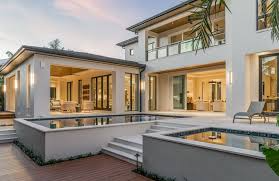Table of Contents
- Changing Expectations in Luxury Real Estate
- Sustainable Design as a Status Symbol
- Technology Integrations That Impress
- Personalized Experiences and Amenities
- Global Influences on Local Luxury Markets
- Recent Data on Market Growth and Demand
- Future Outlook for High-End Homes
- Notable Industry Insights
Changing Expectations in Luxury Real Estate
The hallmarks of luxury homes have undergone significant changes over the past decade. Discerning buyers are seeking far more than just marble countertops and grand staircases. There’s now a pronounced desire for truly bespoke living spaces—environments tailored to match each owner’s personality and daily needs. Modern luxury buyers want everything from custom wine cellars and private gyms to in-home theaters and wellness spas, desiring a sense of total comfort and sophistication without sacrificing originality. This transformation is evident in markets around the country, and those shopping for distinctive residences—like Las Vegas custom luxury homes for sale—are finding that uniqueness, privacy, and a seamless indoor-outdoor connection rank high on their lists.
With the influence of high-profile architects and forward-thinking designers, luxury real estate now celebrates both function and artistic flair. Some homes boast hidden doors, retractable walls, or secret gardens, adding an element of intrigue and excitement to everyday living. This evolution in thinking influences how luxury homes are constructed and marketed, with custom features becoming increasingly a necessity rather than a luxury.
Sustainable Design as a Status Symbol
Eco-conscious luxury has quickly become more than a trend—it’s now a defining status symbol. Today, buyers of exclusive homes expect to see solar panels, geothermal heating and cooling, and next-generation insulation that keeps utility costs low while offering peace of mind. Sustainability is integrated at every stage, from site selection and building materials to water conservation and intelligent energy management systems. Green roofs and rainwater harvesting systems are being introduced into estate properties, while landscaped gardens rely on native plants to minimize water waste and support biodiversity.
LEED and other green certifications are standard badges of honor in high-end real estate circles, signifying not just environmental awareness but a forward-looking investment. Sustainability now ranks alongside aesthetics and technology, reflecting an owner’s values and enhancing the long-term value of a property. The luxury market’s demand for sustainable features is driving significant innovation and setting a benchmark for new builds worldwide.
Technology Integrations That Impress
Technology is rapidly transforming luxury homes into intelligent havens. No longer a novelty, smart home systems are now expected by most luxury buyers. These integrated solutions go beyond app-controlled lighting—they handle automated climate control, custom entertainment setups, voice-activated shades, and even remote energy management. What distinguishes truly forward-thinking luxury homes is their use of artificial intelligence and predictive analytics. These systems learn a household’s routines and automatically adjust settings so everything is just right, from the lighting in the kitchen at breakfast time to music playlists and temperature preferences when returning home.
Security remains a top priority, driving a surge in features such as facial recognition entry, biometric locks, and advanced video surveillance that can be monitored via smartphone or wearable device. Entertainment amenities have also evolved. Home theaters are equipped with the latest sound and projection technology, dedicated gaming suites are becoming increasingly common, and robust, high-speed connectivity is a standard feature. Some properties have even integrated wellness tech, such as circadian lighting, whole-home water filtration, and innovative gym equipment, providing both comfort and health benefits within the confines of home.
Personalized Experiences and Amenities
Today’s buyers don’t just want beautiful homes—they want personalized experiences and unique amenities that elevate daily living. High-end properties often feature amenities that cater to passions and hobbies. Wine enthusiasts can enjoy temperature-controlled wine cellars; fitness aficionados utilize custom home gyms equipped with professional-grade equipment; culinary lovers have kitchens designed for gourmet chefs, often featuring restaurant-quality appliances or chef’s tables for at-home tastings. Themed entertainment rooms, sports simulators, billiards halls, and even golf greens blend personal interests with luxury living.
Wellness is another growing focus. Dedicated yoga and meditation studios, indoor lap pools or spas, and spa-like bathrooms designed for relaxation and rejuvenation are increasingly standard. Some homes even feature private art galleries, music recording studios, or auto showrooms. More than ever, developers are collaborating with buyers to incorporate features that bring aspirations to life. These personalized amenities not only create unforgettable experiences for residents but also significantly increase a property’s value and desirability among like-minded buyers.
Global Influences on Local Luxury Markets
Luxury real estate is increasingly shaped by international tastes and design sensibilities. As high-net-worth individuals move fluidly between cities and countries, their experiences and preferences travel with them, inspiring innovation in local markets. Homes in metropolitan centers are borrowing from global traditions—incorporating European gourmet kitchens, Zen-inspired bathrooms, or artfully landscaped Mediterranean courtyards. This fusion of design often creates an eclectic feel that enhances the property’s allure.
The global perspective isn’t limited to aesthetics. It’s also seen in the services offered. Exclusive concierges, on-demand butlers, or personal sommeliers are trends that began abroad and now feature prominently in American luxury real estate. This cross-pollination widens the pool of potential buyers and challenges developers to innovate, raising the bar for what defines an aspirational property in any given market. As the world becomes increasingly interconnected, luxury real estate serves as a canvas where cultures blend and global sophistication takes center stage.
Recent Data on Market Growth and Demand
The resilience of the luxury real estate market stands out, even as other sectors have faced uncertainty. North America led the way, witnessing a remarkable 44% jump in luxury home sales during this period. What’s fueling this expansion? Buyers are drawn to prime property by limited supply, the need for privacy, and the possibility of remote work. Many view luxury real estate not just as a status symbol, but also as a robust and long-term investment.
Reliable and transparent data are now a must for anyone entering the luxury market. The increasing use of analytics, from market trend reports to property-specific smart data, helps buyers and sellers make strategic, informed decisions. Resources like the National Association of Realtors’ luxury property insights provide essential data on pricing trends, inventory shifts, and buyer demographics. Savvy investors track shifts in interest rates, economic forces, and buyer sentiment, while home shoppers demand comprehensive market insights before making big decisions. The embrace of data-driven strategy represents a significant advancement and a hallmark of today’s luxury real estate landscape.
Future Outlook for High-End Homes
The future of high-end real estate promises even more innovation, with advances in sustainability, health-centric design, and digital integration shaping the next generation of developments. Homebuyers expect luxury dwellings to be adaptive spaces that evolve alongside technology and lifestyle trends, making them both investment-worthy and enjoyable in the long term. We are likely to see new benchmarks in environmental design, with net-zero energy homes, self-sustaining gardens, and materials that promote indoor air quality.
Technology will become increasingly intuitive, with homes offering predictive, self-adjusting systems that enhance comfort, promote energy savings, and ensure security. Flexibility will also stay top of mind: convertible spaces can serve as business hubs, relaxation sanctuaries, or ultimate entertainment zones, depending on the day’s needs. In this way, high-end real estate will provide a blueprint for a more resilient and dynamic way of living, setting trends that influence not only the luxury segment but also the broader housing market.
Notable Industry Insights
The meaning of luxury is shifting, with personalization, privacy, and innovation now at the forefront. While one buyer may desire absolute seclusion, another might prioritize health technologies, or dream of a home where creative passions come alive. As high-end living continues to evolve, industry watchers expect ongoing experimentation to shape the market, delivering new options that anticipate—even before buyers articulate—their increasingly complex aspirations.
Over the next decade, luxury living will be reimagined yet again. No longer simply about opulence or excess, it reflects the ultimate personal expression: a home custom-crafted for fulfillment, well-being, and pleasure, tailored to the priorities of tomorrow’s discerning homeowners.



